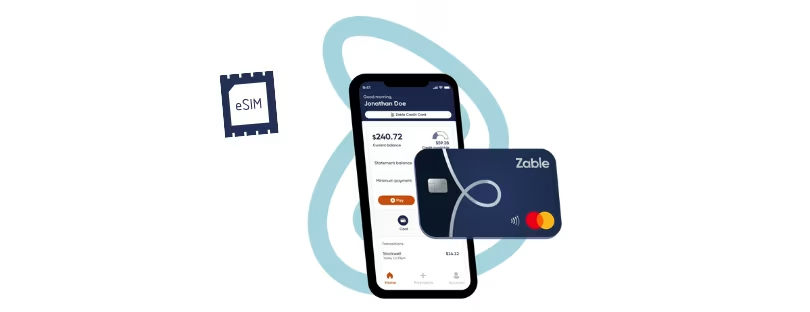
eSIM Trends for 2025: What Travelers Should Expect
As we look toward the future of travel, eSIM trends for 2025 are set to reshape how we connect on the go. The rapid evolution of technology is enhancing our travel experiences, and embedded SIM (eSIM) technology is at the forefront of this transformation. With its increasing global adoption, eSIM promises unmatched flexibility, convenience, and significant cost savings over traditional SIM cards.
By 2025, it is projected that around 850 million smartphone connections will use eSIM technology globally, representing about 76% of the total number of smartphone connections. This number is expected to grow significantly to approximately 6.7 billion connections by 2030, GSMA reports.
Here are the key trends travelers should keep an eye on as eSIM becomes an essential component of modern travel connectivity.
1. Global Adoption and Compatibility Expansion
Despite the rapid growth in eSIM technology, less than 30% of consumers in major markets are currently aware of what eSIM is, GSMA said.
By 2025, more telecom providers worldwide are expected to embrace eSIM technology, increasing global compatibility. This expansion will reduce the need for physical SIM cards, allowing travelers to switch between networks effortlessly as they cross borders. Even countries and regions where eSIM was slow to gain traction are now embracing the technology, making it a truly global solution.
2. Simplified Multi-Country Coverage
For frequent travelers, eSIM providers will likely offer multi-country packages tailored for seamless travel across various regions. Companies like BNESIM, Airalo, Airhub, GigSky or Ubigi are already offering such plans, but by 2025, expect to see more comprehensive offerings. These packages will reduce the hassle of managing multiple SIMs or changing them for each destination, giving users the freedom to stay connected without interruptions.
3. eSIM Bundled with Travel Services
In 2025, eSIMs will become more integrated into travel services such as hotel bookings, airline apps, and travel insurance packages. For instance, upon booking a flight or hotel, travelers could receive an offer to purchase an eSIM with discounted data plans that cover their destination. This bundling will streamline connectivity and offer peace of mind, ensuring travelers can stay online from the moment they land.
4. Enhanced Data Security
Data privacy and security concerns will drive improvements in eSIM technology. Telecom providers are expected to introduce advanced security features that protect travelers from data theft and hacking while using unfamiliar networks. End-to-end encryption, multi-layer authentication, and automatic network switching to the most secure options will be a standard part of the eSIM experience by 2025.
5. IoT and eSIM Synergy
The Internet of Things (IoT) is expected to gain even more prominence in travel with the help of eSIM technology. From connected luggage and wearables to smart hotel rooms and rental cars, eSIMs will facilitate uninterrupted connectivity for travelers’ devices, enhancing convenience and efficiency. This synergy between IoT and eSIM will redefine how travelers interact with smart devices on the go.
6. Eco-Friendly Travel with eSIM
As travelers become more environmentally conscious, eSIM’s paperless nature will appeal to the eco-conscious crowd. No more plastic SIM cards or unnecessary packaging, which will contribute to reducing e-waste. In 2025, expect eSIM to be promoted as part of a greener, more sustainable way to stay connected while traveling.
7. eSIM-First Devices
By 2025, an increasing number of smartphones and connected devices will be eSIM-first, meaning they will no longer require a physical SIM slot. Major tech manufacturers are already moving in this direction, with some flagship devices being eSIM-exclusive. This will push travelers to adopt eSIM faster, as it will become the default option for most of their tech gadgets.
8. Real-Time Plan Management
eSIM providers are expected to offer more intuitive, real-time management of data plans, allowing travelers to add or modify their plans instantly through apps. This will allow users to buy top-ups, switch providers, or manage multiple plans at the touch of a button, giving them greater control over their data usage and costs.
9. Rise of Budget-Friendly eSIM Providers
As competition in the eSIM market heats up, travelers can expect more budget-friendly options. Providers will offer competitive pricing, better coverage, and unique features to attract more users. This trend will make eSIM an affordable option for all types of travelers, from business travelers to backpackers.
10. 5G and Beyond
With the rollout of 5G networks in full swing by 2025, travelers can expect faster and more reliable data connections through their eSIM. Enhanced network speeds will make streaming, video calls, and online activities smoother than ever, even in remote destinations. Some providers may even start offering plans that support next-gen connectivity, such as 6G, depending on regional availability.
Conclusion
As 2025 approaches, eSIM is on track to become the go-to solution for travelers looking for flexible, secure, and convenient connectivity options. With its global reach, cost efficiency, and growing integration with travel services, eSIM is set to redefine how we stay connected during our travels. Whether you’re a frequent flyer or a casual explorer, embracing eSIM will ensure you’re always ready for your next adventure.










